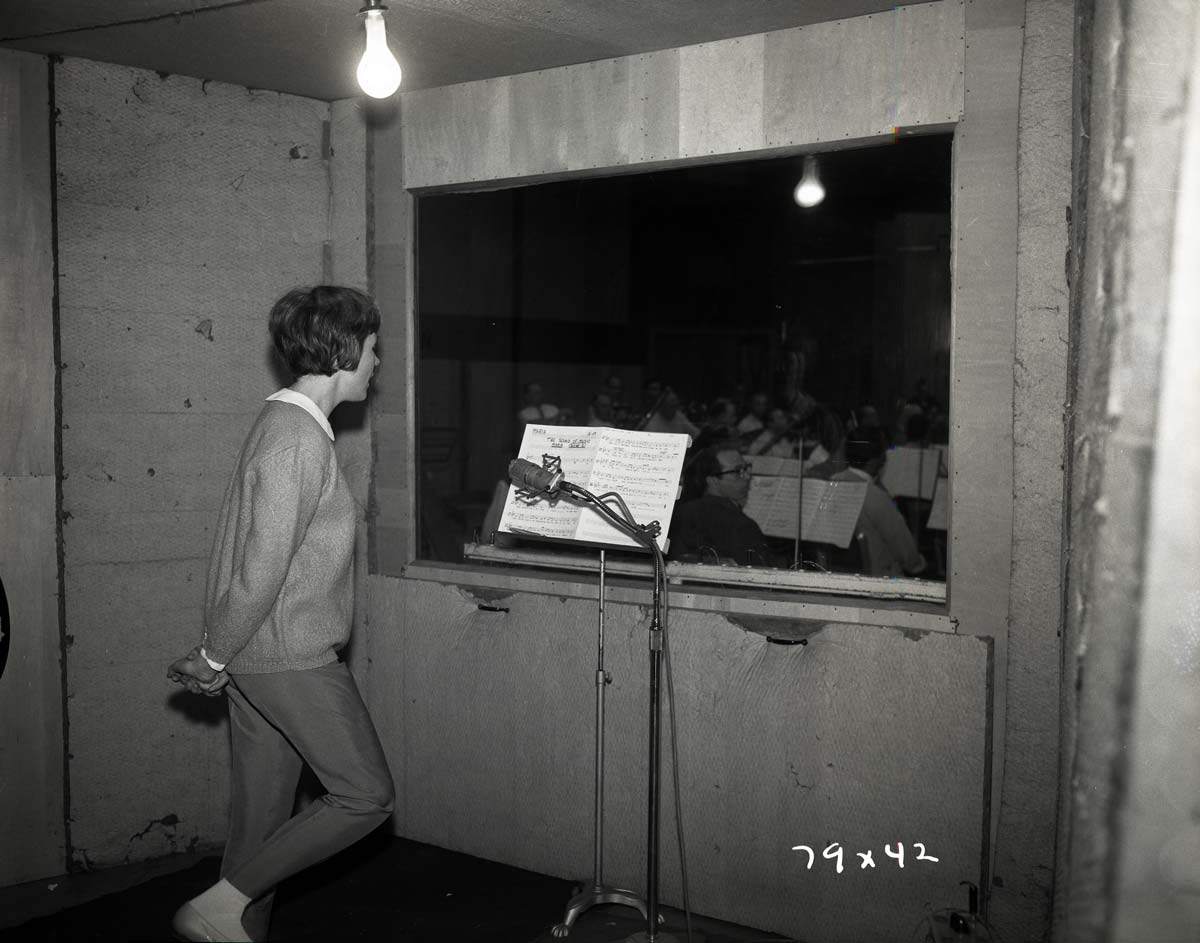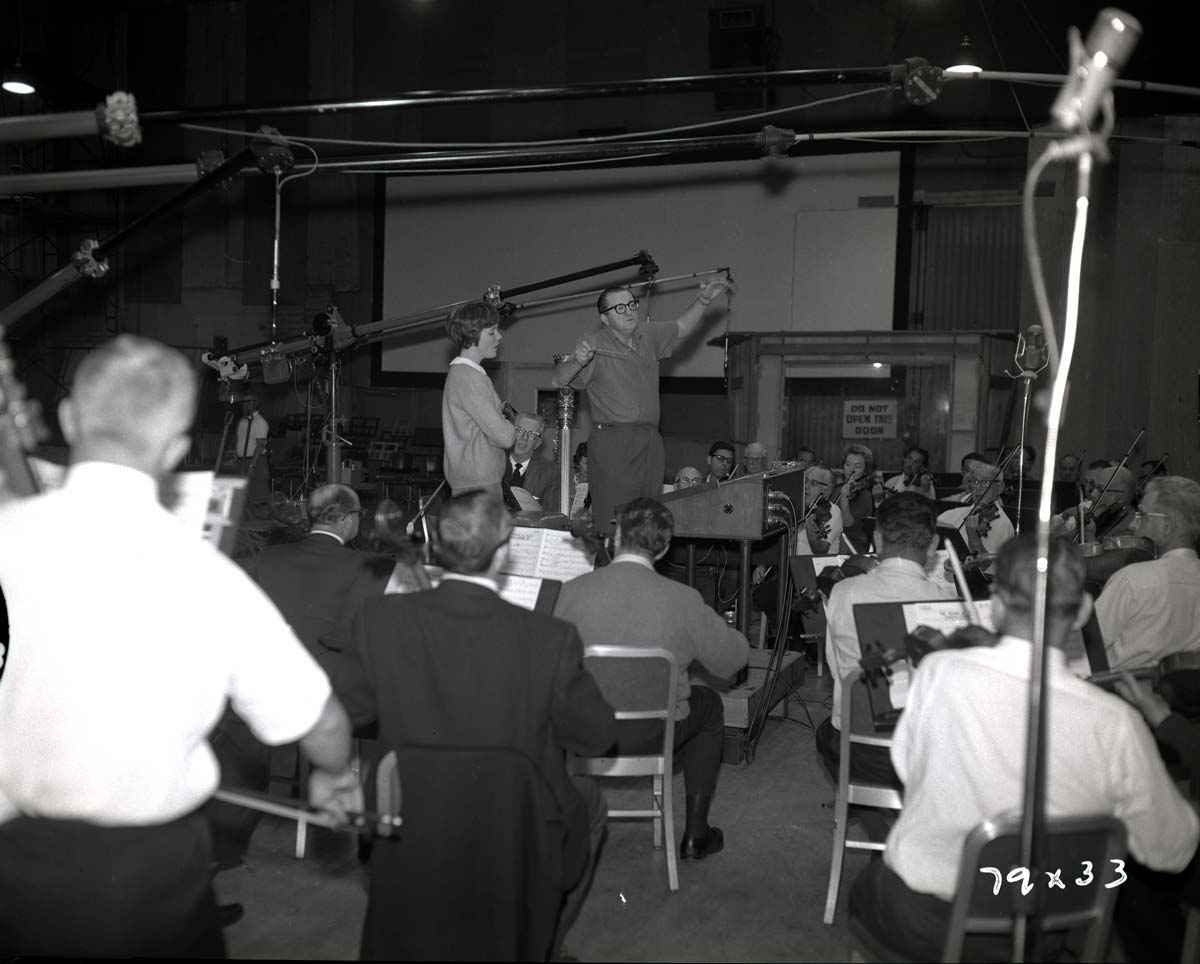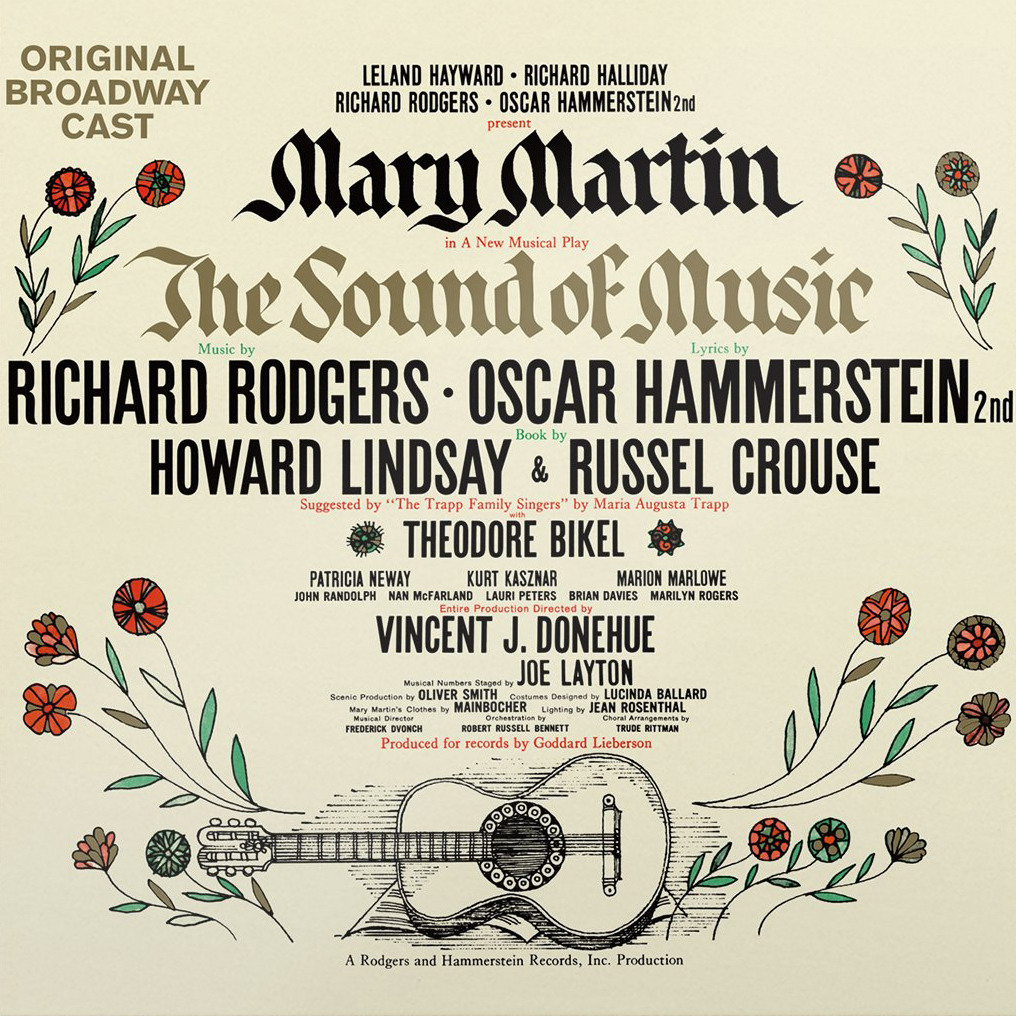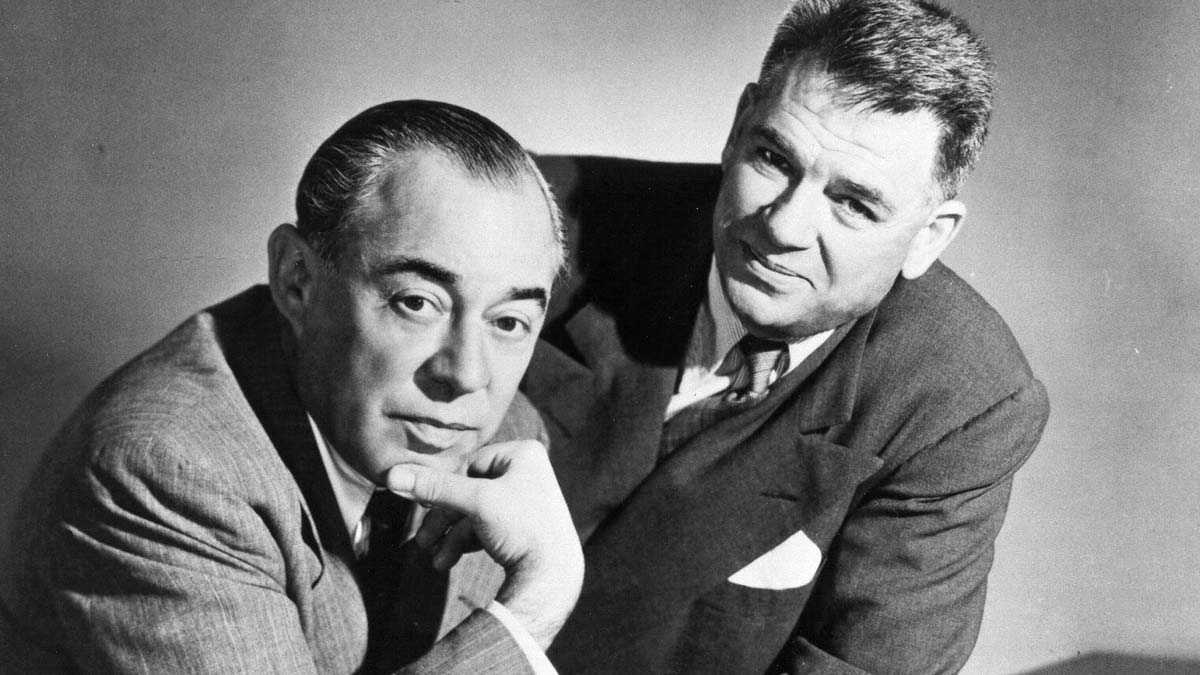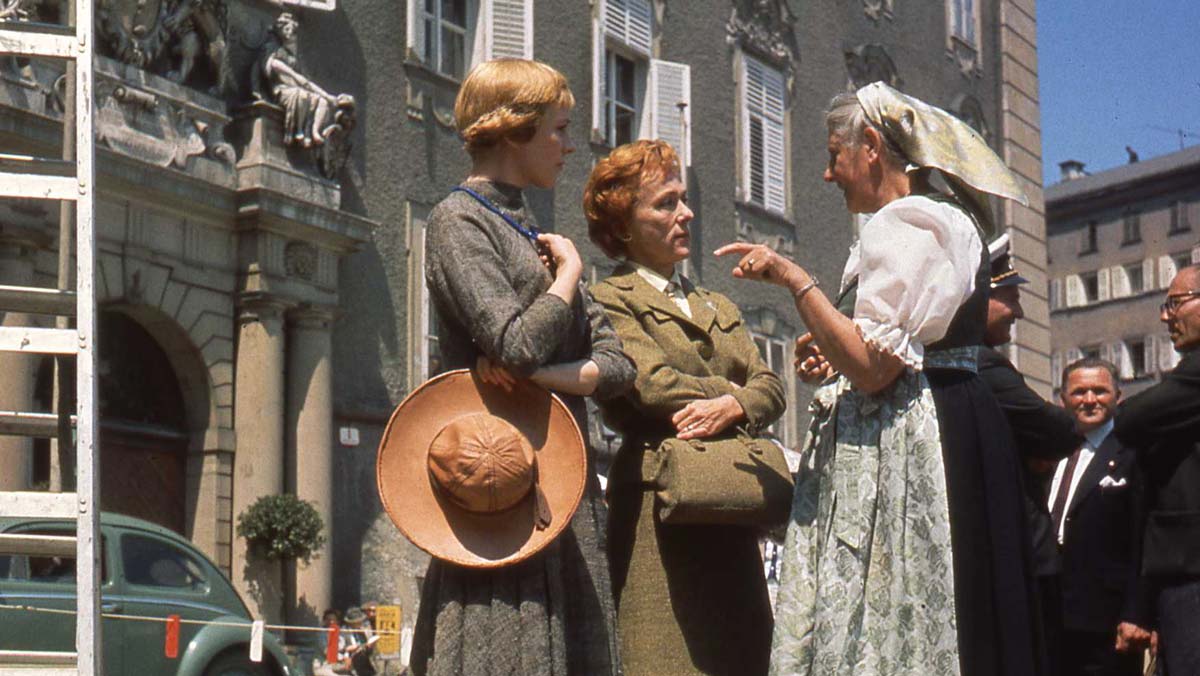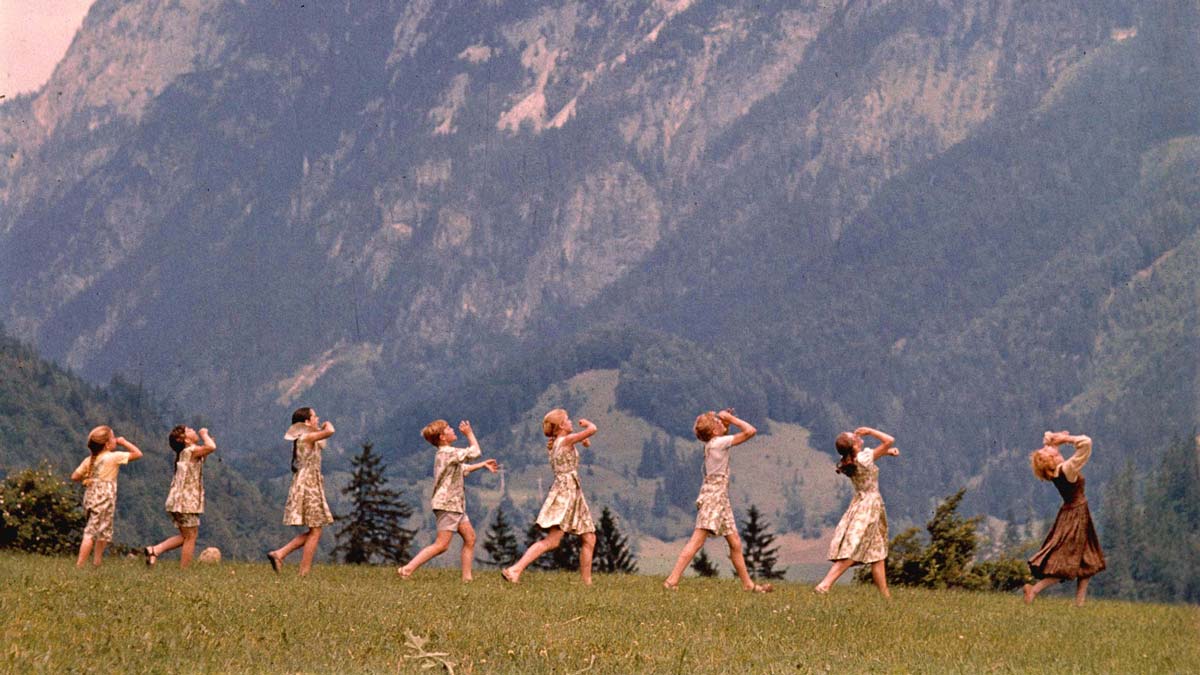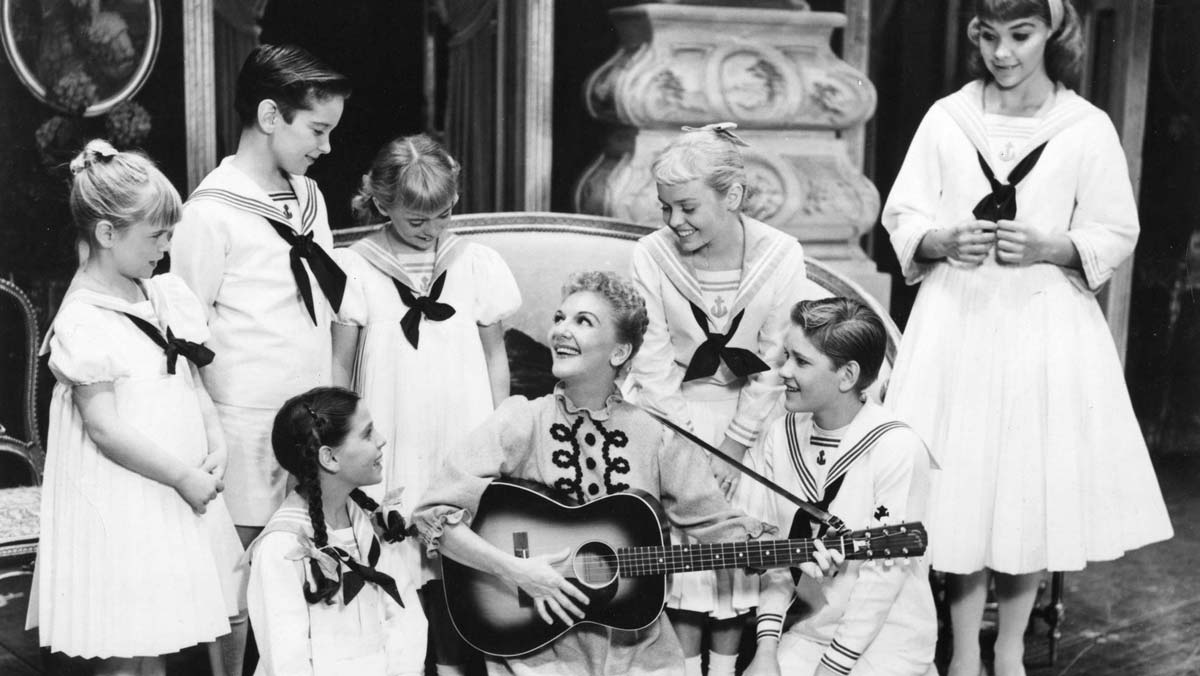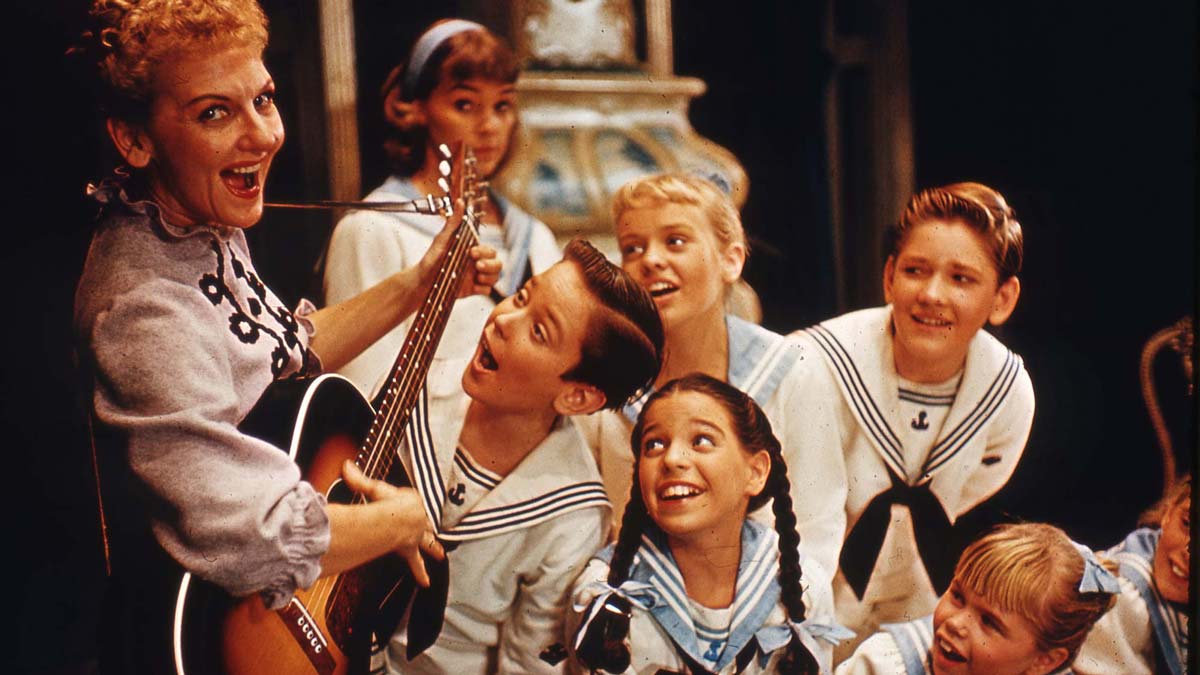THE CHARTS ARE ALIVE WITH THE SOUND OF MUSIC
If you were a first-grader in 1965 and you were asked to define a “record,” you could easily be forgiven for describing it as a flat, round, black disc that has Julie Andrews singing on it.
In an era marked by the rise and triumph of Beatlemania, the ascension of the Motown Sound, and the beachhead of the British Invasion, the two most dominant long-playing albums of the mid-1960s were, far and away, the soundtracks to Mary Poppins and The Sound of Music. The astonishing trajectory of those two sonic hallmarks of Julie Andrews’ tremendous popularity would have its roots back in 1956, with another recording that featured—surprise, surprise—Julie Andrews.
The Columbia original (mono) cast recording of My Fair Lady—featuring, of course, Rex Harrison and Julie Andrews—was released on April 28, 1956 and by July had hit Number One on the charts; it would chart at Number One for fourteen weeks. Most impressively, it would stay on the Billboard charts (which consisted of every genre of popular music) for an unmatched 480 weeks—making it the longest “running” album of all time, of any kind.
The mastermind of that album was a producer of exceptional taste and perception, Goddard Lieberson. At Columbia, during the dawn of the LP era, Lieberson produced the game-changing cast album of South Pacific in 1949 and the cast recordings for Rodgers & Hammerstein’s final two musicals: Flower Drum Song, which hit the record racks in January of 1959, and The Sound of Music, released in December. Flower Drum Song did surprisingly well, staying at Number One for three consecutive weeks. The Sound of Music with Mary Martin, however, was the real blockbuster: sixteen weeks at Number One. It would still remain in the Top Five when Oscar Hammerstein II passed away in August of 1960.
The Sound of Music’s original Broadway cast album stayed on the charts for 276 weeks until November of 1965 and it overlapped with the soundtrack of The Sound of Music for nine months. The soundtrack album then continued on the charts for a total of 233 weeks, until March of 1969.
For all of the extraordinary success of its cast album, none of the songs from The Sound of Music was a breakaway hit on the pop charts, perhaps because of the specific nature of the setting and the organic relationship of the songs to the narrative (which is never a bad thing). But Americans still knew the show and the score well enough to appreciate a parody version called “The Swiss Family Pratt,” done as part of a CBS television special in 1962. The show was Julie and Carol at Carnegie Hall and the spoof was led by none other than—you guessed it—Julie Andrews. By this point, Andrews had burnished her star power playing the lead in Lerner and Loewe’s 1960 follow-up, Camelot—and the original cast album for that show was also a Lieberson Columbia recording and a Number One hit, with a total of 265 weeks on the charts. (Are we seeing a trend here?) Andrews’ career was ascending so quickly that by the summer of 1963, she was in Burbank, California, shooting her first film at the Walt Disney Studios: Mary Poppins.
Mary Poppins was released the week before Labor Day in 1964; at roughly the same time, Andrews was wrapping up filming of The Sound of Music. The soundtrack album, released by Buena Vista Records, made a slow climb up the Billboard charts, but by March 13, 1965 (the same week that The Sound of Music had its Los Angeles premiere), it had become the Number One album in the country, beating back the backbeat of Beatles ’65. After a brief tussle with the soundtrack to Goldfinger, the Mary Poppins album returned to the Number One spot and stayed there for thirteen weeks until July 3rd when the Beatles VI took the top position on the album charts.
For all of the extraordinary success of its cast album, none of the songs from The Sound of Music was a breakaway hit on the pop charts, perhaps because of the specific nature of the setting and the organic relationship of the songs to the narrative (which is never a bad thing).
The soundtrack to The Sound of Music was released in the middle of this showdown among an Edwardian nanny, a British secret agent, and four mop tops from Liverpool and by late May of 1965, it had skyrocketed far enough to be the Number Two album in the country; the Number One album was Mary Poppins and the two soundtracks toggled back and forth in those respective positions for the next four weeks. To be the lead performer on the Number One and Number Two albums in the country—for a month—was an unprecedented (and unrepeated) achievement for Julie Andrews.
National consumers besotted with the movie were able to bring home quite a handsome album with the RCA Victor soundtrack to The Sound of Music. Show music and film music had become, in the early 1960s, prestige items and their LP releases were decorated with all sorts of attractive bells and whistles. The Sound of Music contained a gloriously illustrated eight-page “storybook” insert with photos from the film and profiles of the stars and crew. It also contained a glowing “Tribute to a Partnership,” a lengthy article of praise for Rodgers & Hammerstein, written (presumably months before the film’s release) by Judith Crist, then the movie critic for the New York Herald Tribune. The joke was on her—or someone, maybe in the marketing department of 20th Century Fox—because when the film actually opened, she slammed it mercilessly.
As the movie went on to become the highest grossing movie of its time, the soundtrack would remain in the Top Five until May of 1966 and stay in the Top Ten until the end of July, 1966; in April, it would be joined on the charts by the hit soundtrack to Thoroughly Modern Mille, which starred—yes, you in the back, with your hand up?—Julie Andrews. Here’s the most astonishing statistic of all: The Sound of Music’s original Broadway cast album stayed on the charts for 276 weeks until November of 1965 and it overlapped with the soundtrack of The Sound of Music for nine months. The soundtrack album then continued on the charts for a total of 233 weeks, until March of 1969. That means, throughout the entire decade of the 1960s—those swinging, unsettling sixties—the most popular and enduring music in America was the score to Rodgers & Hammerstein’s The Sound of Music.
What made the The Sound of Music album so resilient? How did it triumph over its more obstreperous rivals in the pop album world—the Beatles and the Beach Boys, the Monkees and the Supremes, Herb Alpert and the Tijuana Brass? Of course, a huge part of the soundtrack’s appeal is the sound of its music, but part of the story must be that, in the uncertain times of the mid-1960s, a family-oriented musical about a family that stayed together rather than fracturing into a generation gap must have reassuring. Part of it must also be that, in the pre-VHS, pre-DVD days, any kind of precious souvenir of a beloved film would be treasured. Consumers wouldn’t be able to view the movie at home at their leisure until decades after its initial release; the value-added LP of the soundtrack made for a reasonable substitute.
Personally, I think the reason for its success is Julie Andrews. After all, I’ve thought so since I was in the first grade.
Laurence Maslon is the author of The Sound of Music Companion as well as Broadway to Main Street: How Show Tunes Enchanted America. He also is the host of the weekly broadcast/podcast “Broadway to Main Street” on the NPR affiliate WLIW-FM.

